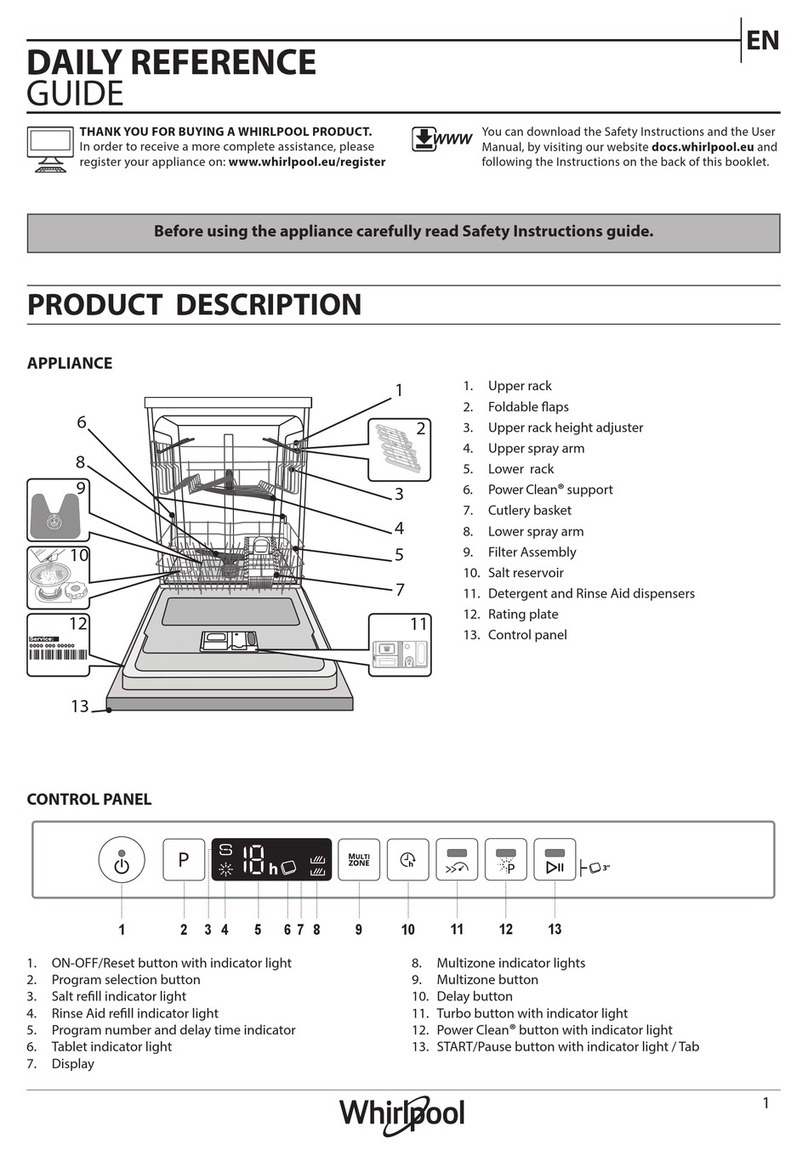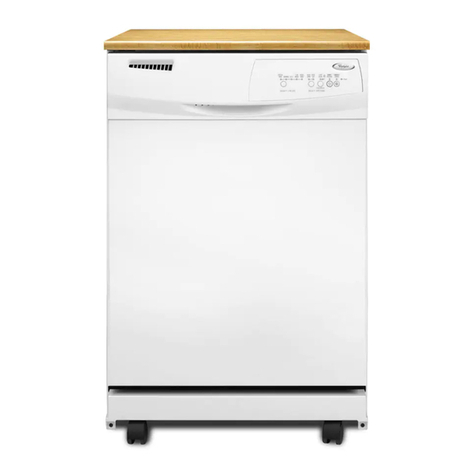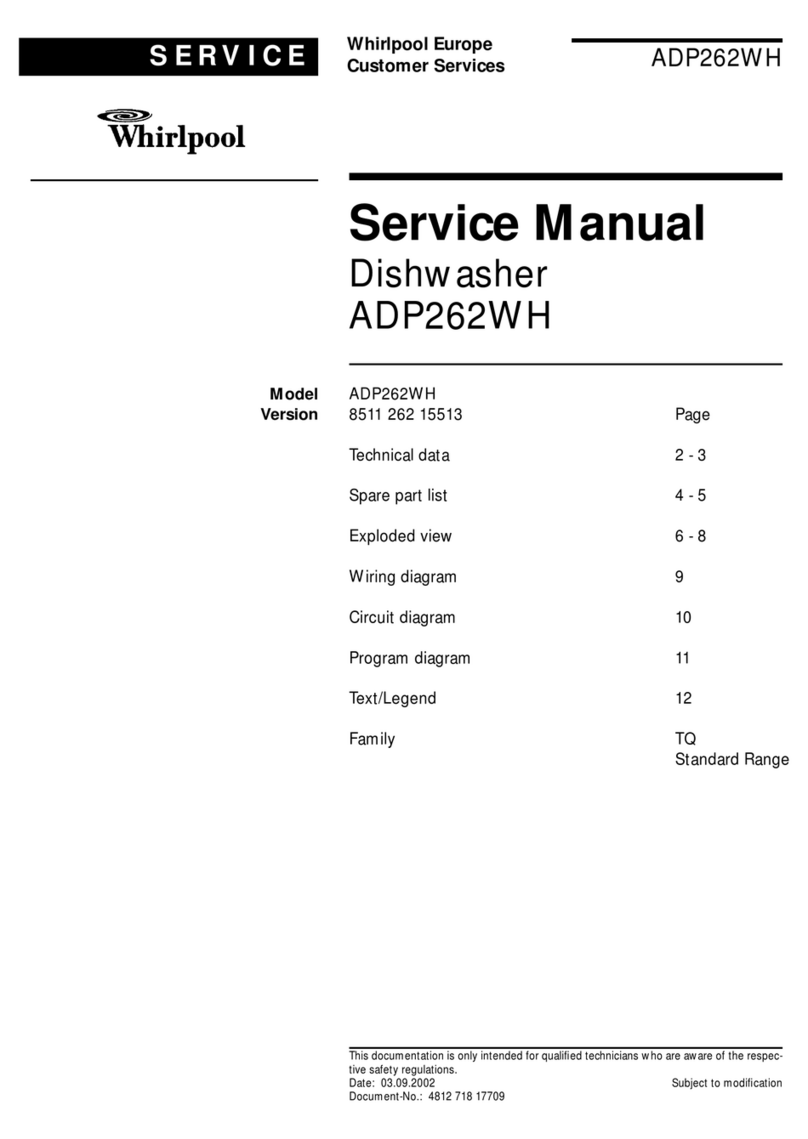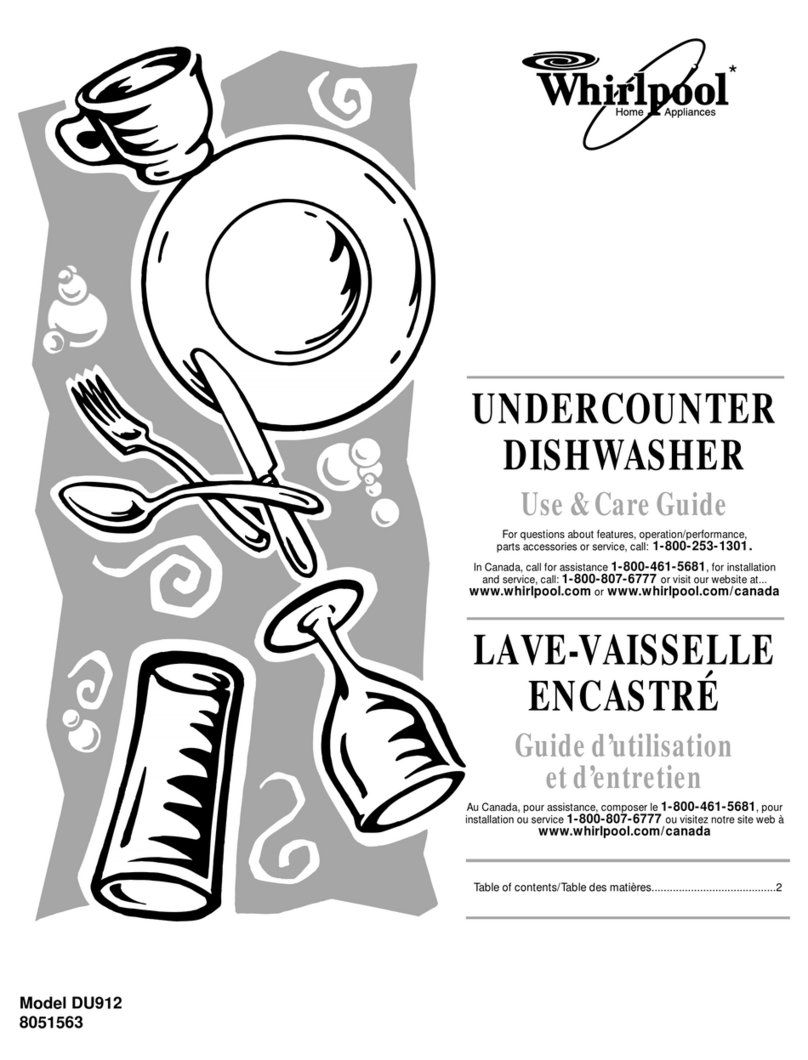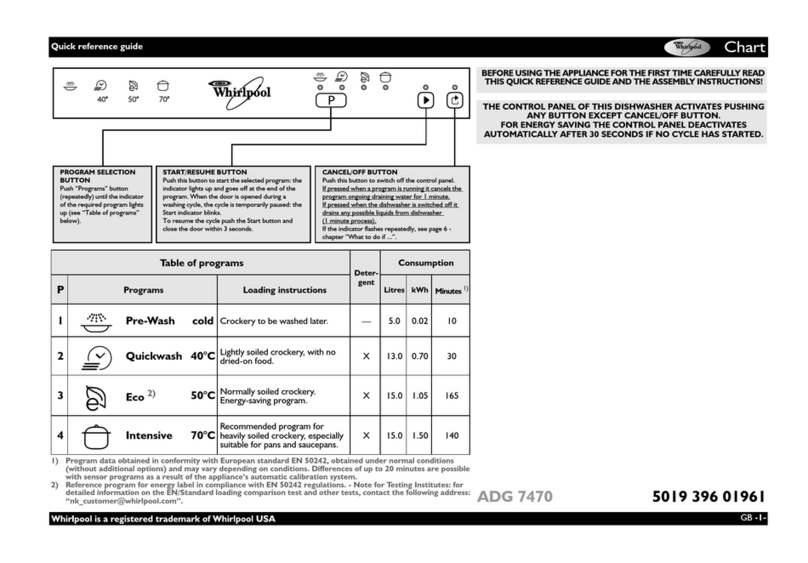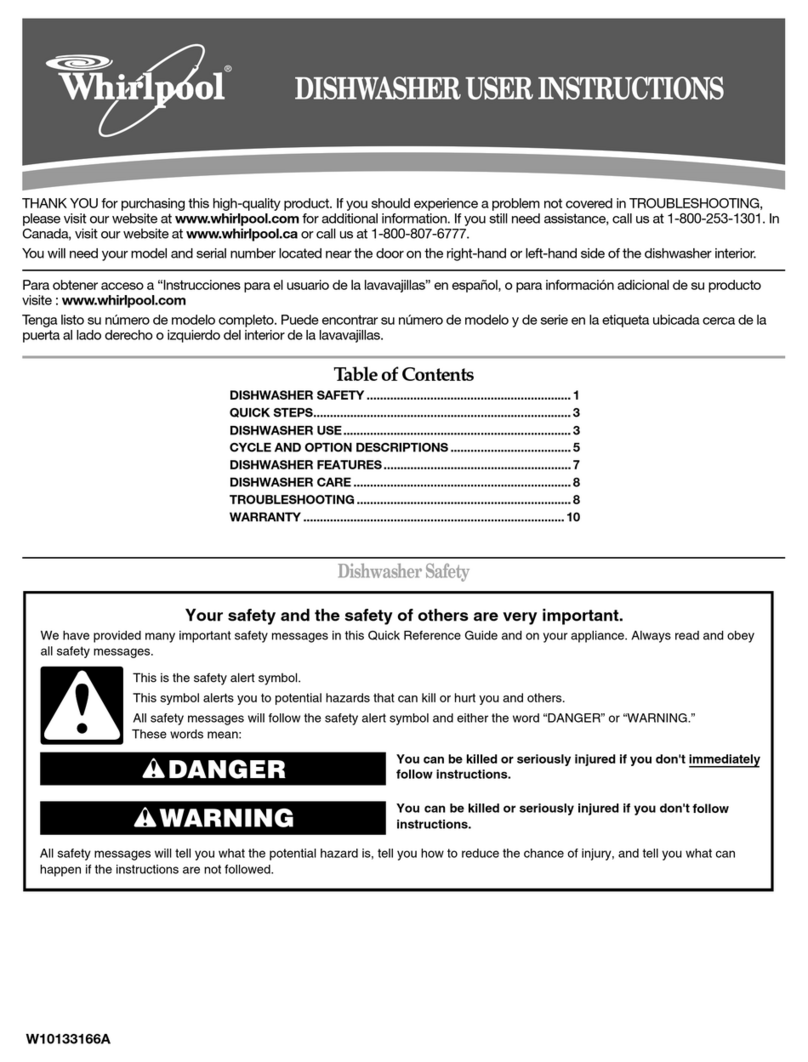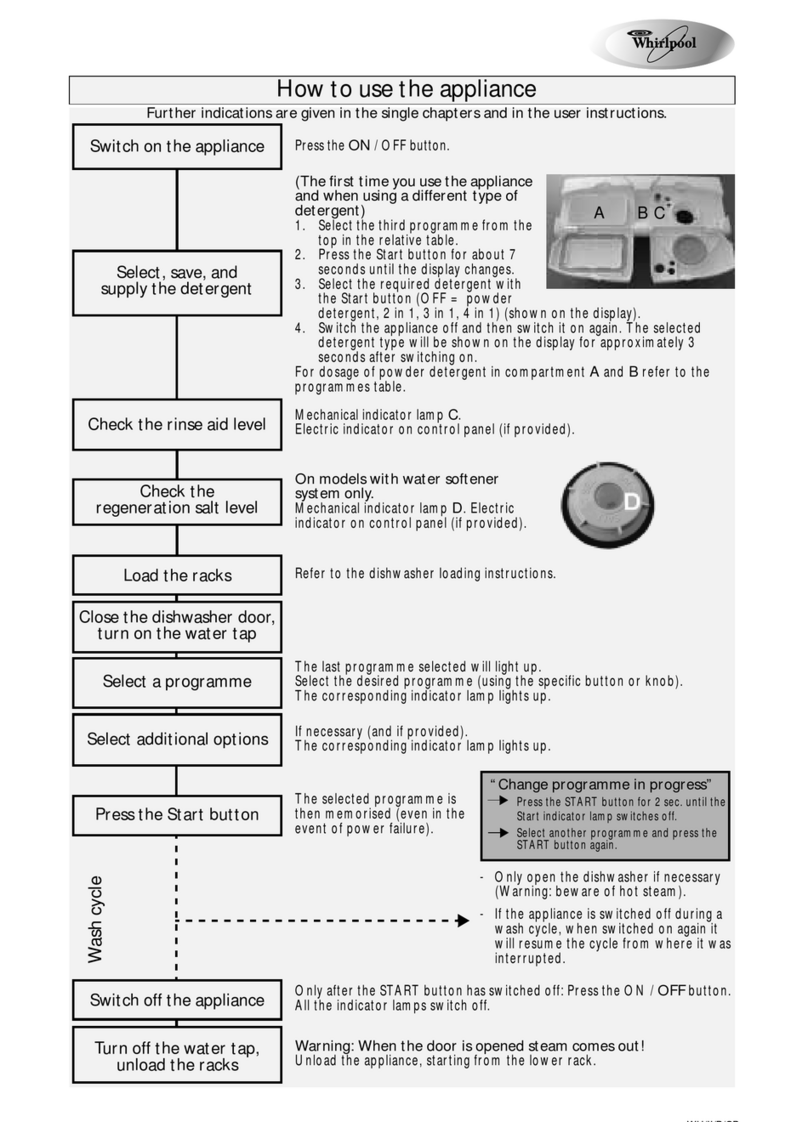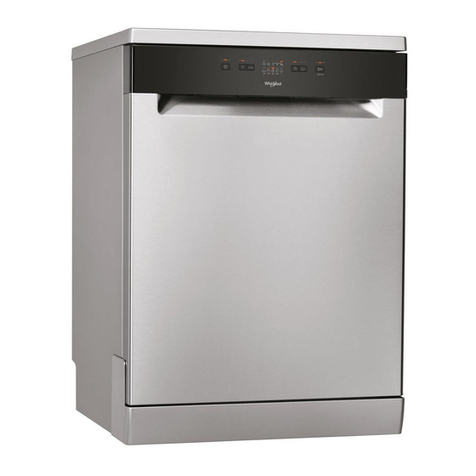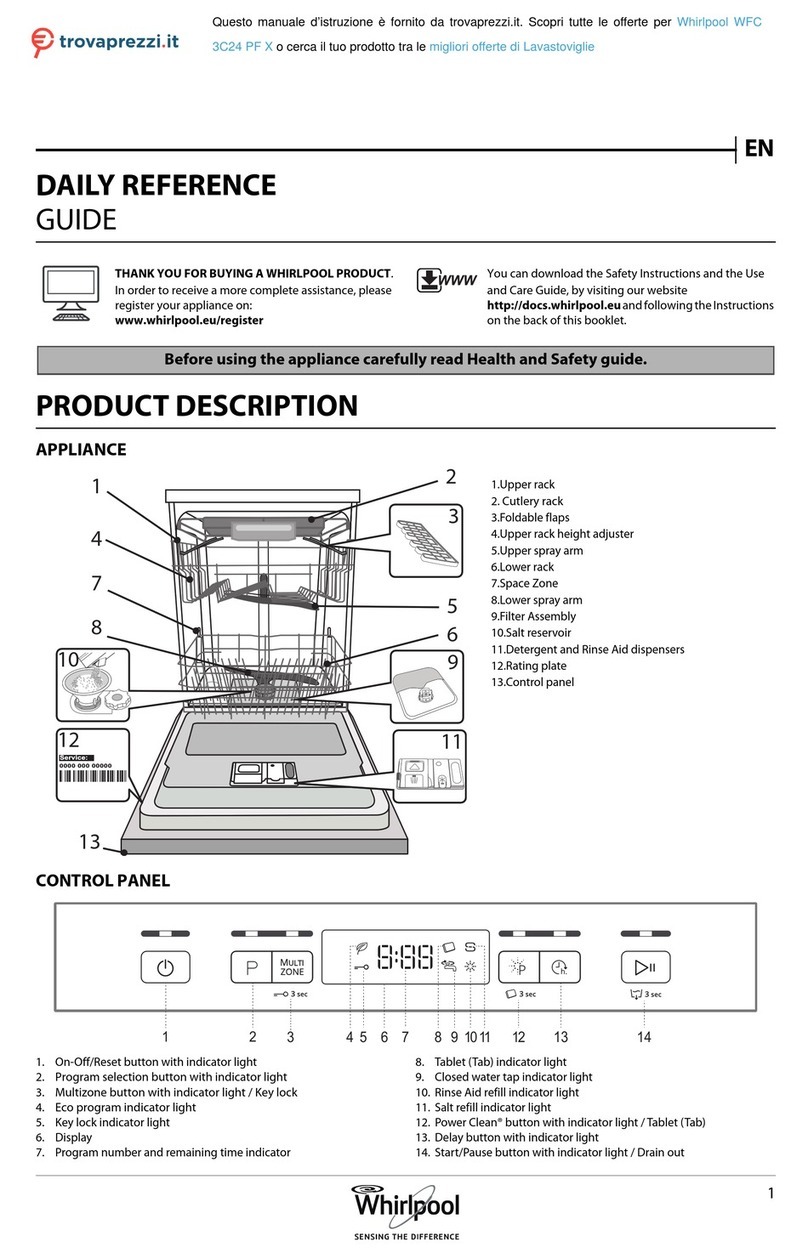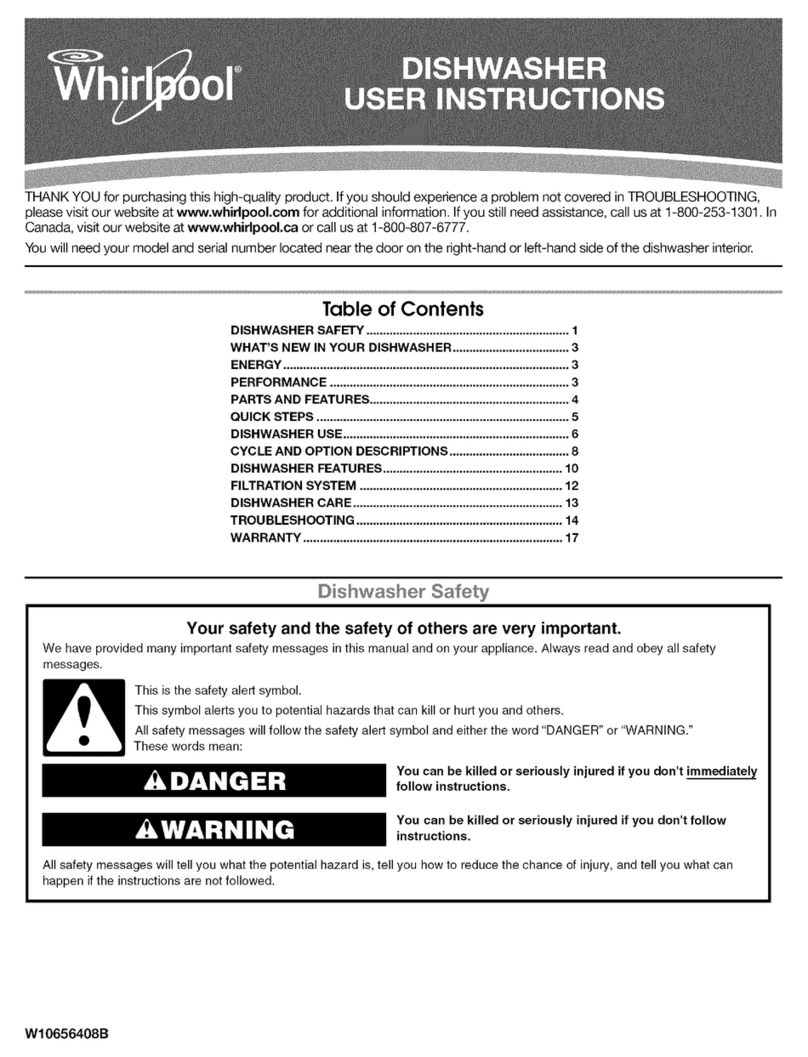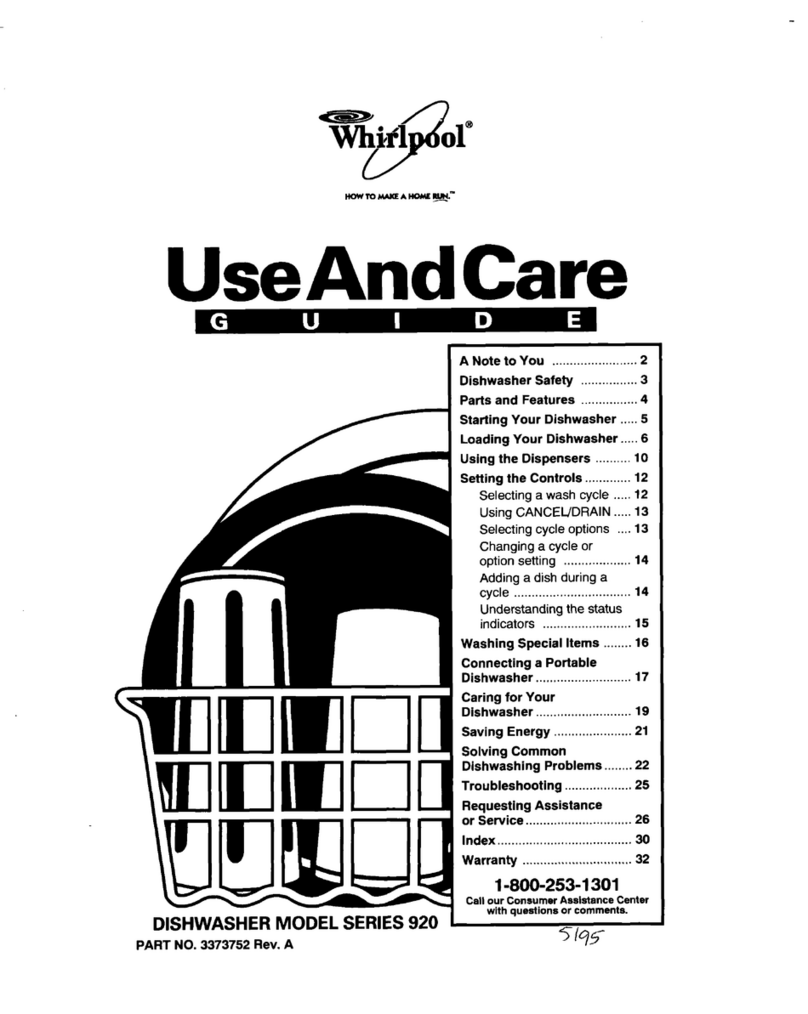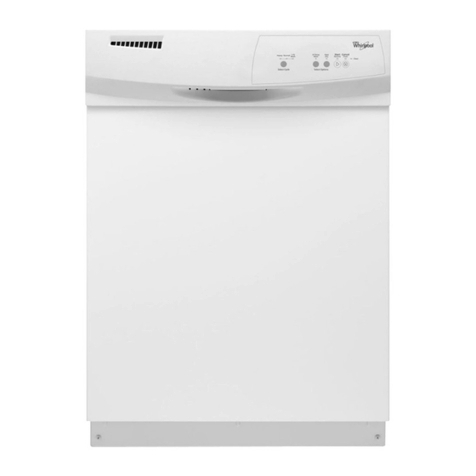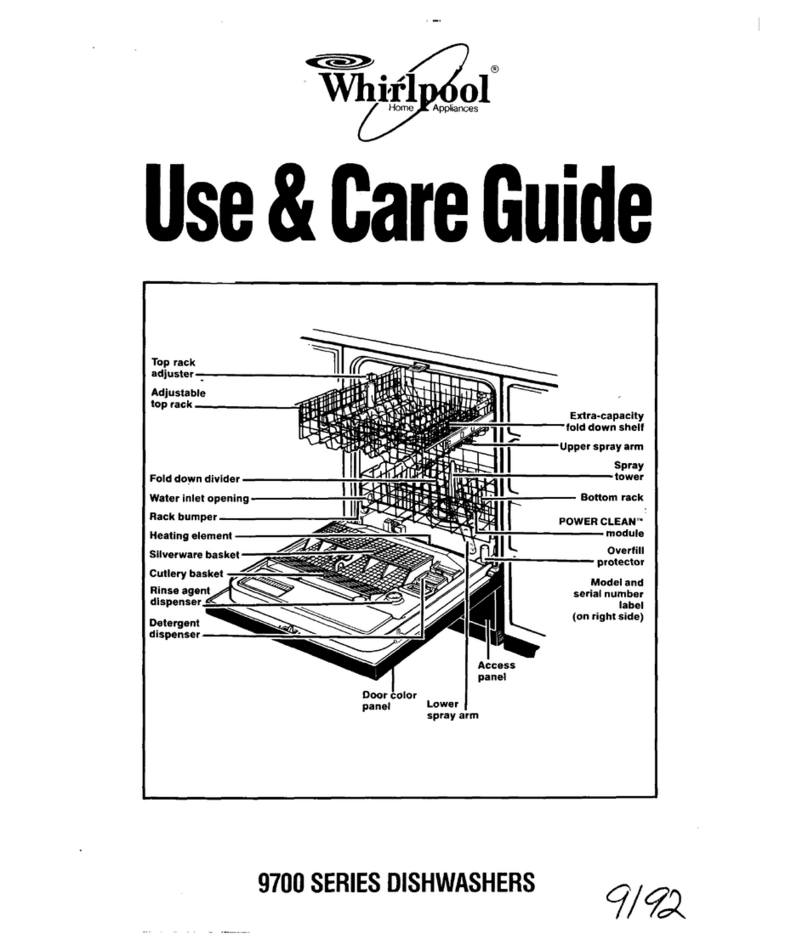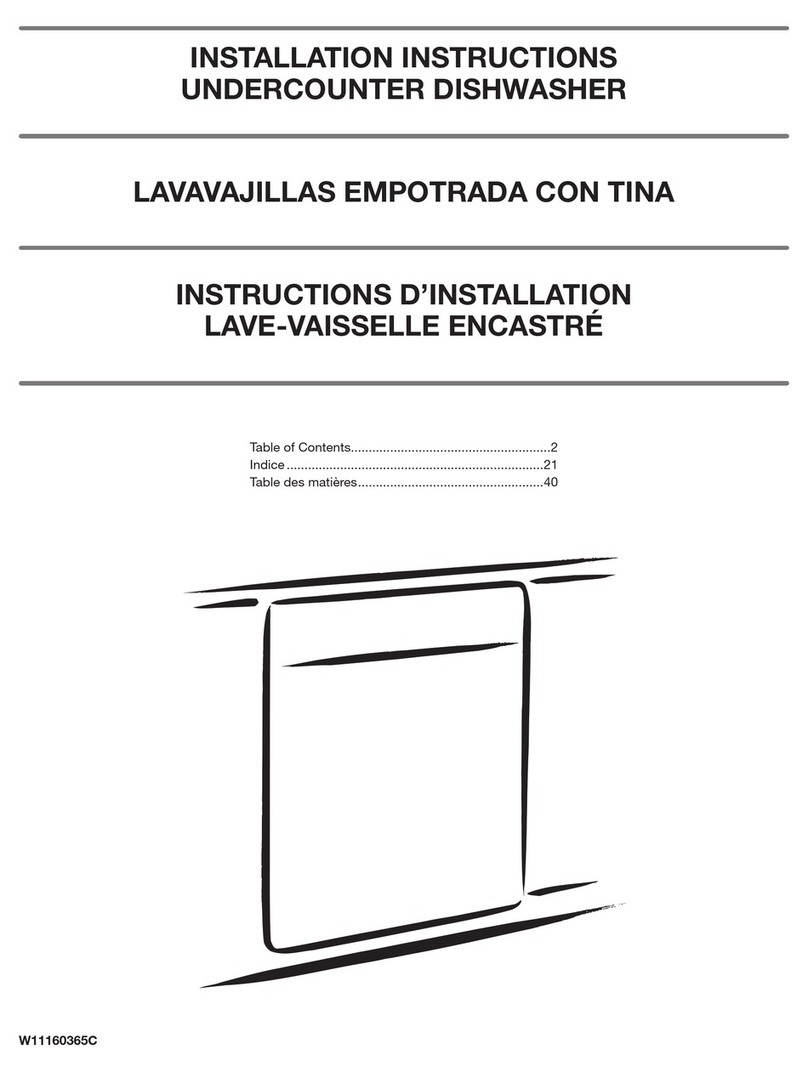Before you start...
Check the area where you will be using
the portable dishwasher, Proper
installation for operation isyour
responsibility. Make sure you have
everything necessary to insure correct
operation. Grounded electrical outlet
isrequired. See “Electrical
Water heater: Should be set to deliver
140°Fwater to dishwasher for best requirements.”
results.
Hot water faucet or hot and cold single-
spout water faucet: Should be
accessible within 30 inches of the back
of the dishwasher and should provide -
15-120 PSIwater pressure.
Important: Observe all governing
codes and ordinances.
Electrical Shock Hazard
It is the customer’s responsibility:
l
To contact a qualified electrical
installer.
l
To assure that the electrical
installation is adequate and in
conformance with National
Electrical Code ANSI/NFPA 70 -
latest edition,* and all local codes
and ordinances.
Failure to do so could result in fire,
electrical shock or other personal
injury. from the dishwasher tub. Close
Copies of the standards listed may be
obtained from:
‘National Fire Protection Association
Batterymarch Park
Quincy, Massachusetts 02269
and latch dishwasher door.
Tools needed for
installation: Electrical
requirements
Parts supplied for
installation:
3 faucet-
adapter kits 4 casters
1 literature package
Drain: To drain your
dishwasher, you
need a sink or a
laundry tub having
a minimum carry-
I
’ away capacity of 7
gallons per minute.
The top of the sink or
laundry tub cannot
be lower than 27
inches or higher
than 48 inches from
the bottom of the
dishwasher.
support the appliance weight of 180
Electrical Shock Hazard
l
Electrical ground is required on this
appliance.
l
If cold water pipe is interrupted by
plastic non-metallic gaskets or
other insulating materials, Do Not
use for grounding.
l
Do Not ground to gas pipe.
l
Do Not modify the power supply
cord. If the plug does not fit the
outlet, have a proper outlet
installed by a qualified electrician.
l
Do Not have a fuse in the neutral
or grounding circuit. A fuse in the
neutral or grounding circuit could
result in electrical shock.
l
Do Not use an extension cord with
this appliance.
. Check with a qualified electrician
as to whether the appliance is
properly grounded.
Failure to follow these instructions
could result in a serious injury or
death.
-
If codes permit and a separate
grounding wire is used, it is
recommended that a qualified
electrician determine that the
grounding path is adequate.
A 120-volt, 50- or 60-Hz, AC-only, 15 or
20-ampere, fused, electrical supply is
required. Time-delay fuse or circuit
breaker isrecommended. It isrecom-
mended that a separate circuit serving
only this appliance be provided.
In areas where the recommended
voltage isnot available, it isnecessary
to install a transformer with a minimum
rating of 1500watts. The output voltage
of the transformer must be 120 volts. If
the transformer does not provide for an
electrical ground, a separate external
grounding wire must be installed in
accordance with local codes and
ordinances. Such a transformer can be
purchased locally. (See Figure 1.)
120-volt
input into
dishwasher
i
,:’
transforber
Figure 1
Recommended
grounding method
For your personal safety, this appliance
must be grounded. Thisappliance is
equipped with a power supply cord
having a 3-prong, grounding plug. To
minimize the riskof electrical shock, it
must be plugged into a mating 3-prong,
grounding-type wall receptacle,
grounded in accordance with the
National Electrical Code ANSI/NFPA
70 - latest edition*, and all local codes
and ordinances. If a mating wall
receptacle isnot available, it isthe
personal responsibility and obligation of
the customer to have a properly
grounded, 3-prong wall receptacle
installed by a qualified electrician.
(See Figure 2.)
J-prong, grounding-
type wall receptacle
3-prong .,-...:.:.
prong
Figure 2
Panel A
